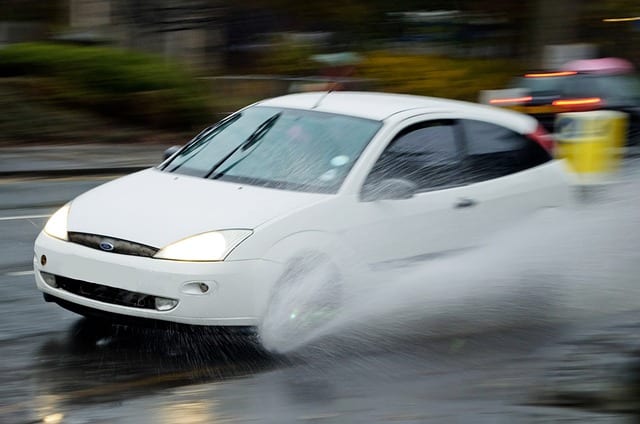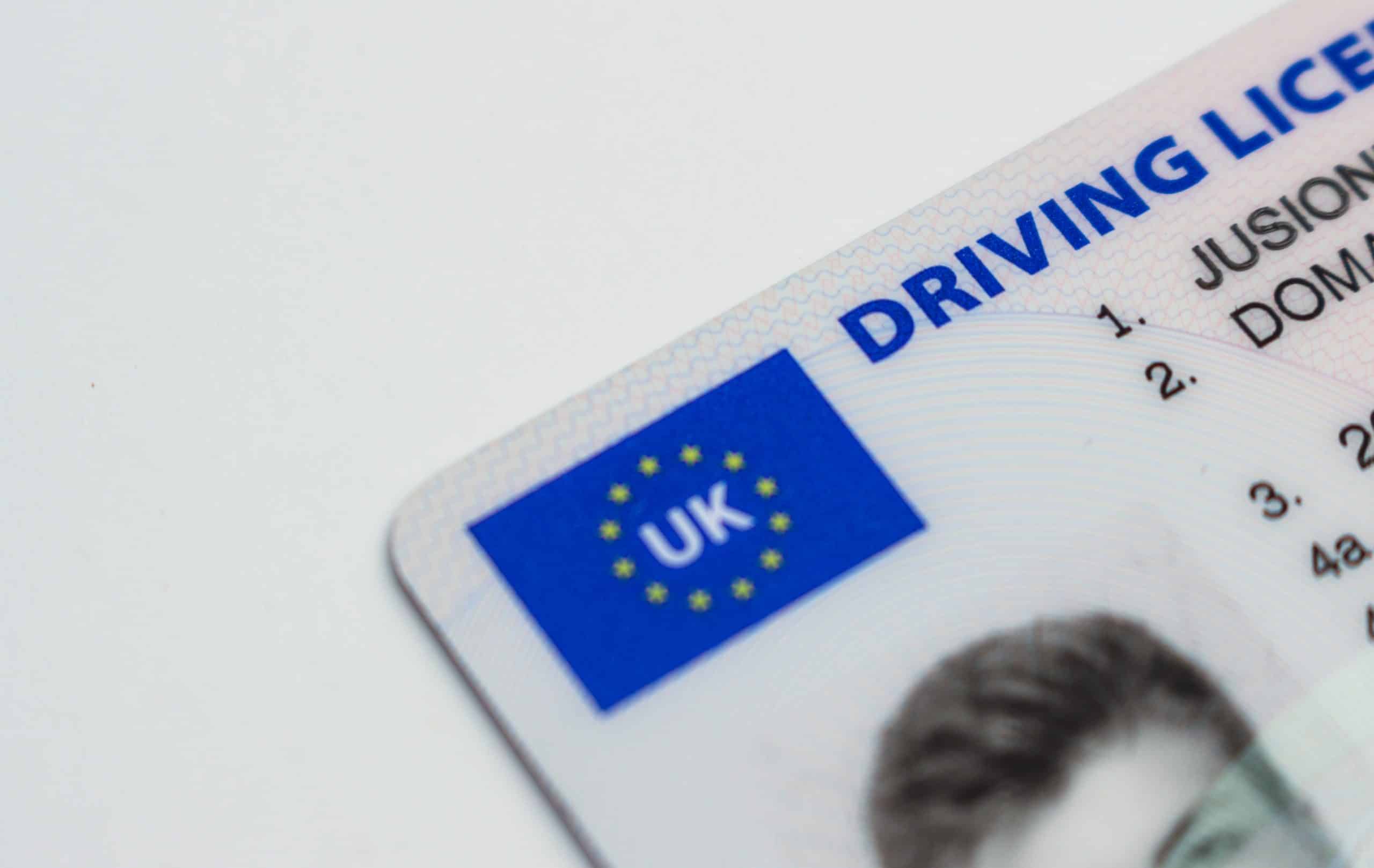
Introduction to Driving in the Rain
Driving in the rain refers to the act of operating a vehicle in wet weather conditions. Rain can have a significant impact on driving conditions, making it more challenging to control the vehicle and see the road ahead. It is important for all drivers, especially new ones, to learn how to drive in the rain in order to stay safe on the roads.
Learning how to drive in the rain is crucial for several reasons. Firstly, rain can reduce visibility, making it harder to see other road users and potential hazards. The raindrops on the windshield can create a blurry effect, and the glare from headlights and streetlights can further hinder visibility. This reduced visibility increases the risk of accidents, as drivers may not be able to react in time to avoid a collision.
Secondly, rain can make the road surface slippery, reducing traction and making it more difficult to control the vehicle. The water on the road can mix with oil and other substances, creating a slick surface. This can lead to skidding, especially when braking or taking sharp turns. It is important for drivers to adjust their speed and increase their following distance to allow for longer stopping distances and better control of the vehicle.
Another potential hazard when driving in the rain is aquaplaning. This occurs when a layer of water builds up between the tyres and the road surface, causing the vehicle to lose contact with the road. As a result, the driver may experience a loss of control and find it difficult to steer or brake effectively. To prevent aquaplaning, drivers should avoid sudden braking or acceleration and maintain a steady speed.
In summary, driving in the rain can be challenging due to reduced visibility, slippery road surfaces, and the risk of aquaplaning. It is important for all drivers to learn how to drive in these conditions to stay safe on the roads. By adjusting their speed, increasing their following distance, and maintaining control of the vehicle, drivers can minimise the risks associated with driving in the rain.
The Risks Associated with Driving in the Rain
Potential Dangers of Driving in the Rain
Driving in the rain poses several potential dangers that can compromise road safety. These dangers include reduced visibility, slippery roads, and an increased risk of aquaplaning/hydroplaning.
Reduced Visibility
Rain significantly reduces visibility on the road, making it challenging to see other vehicles, pedestrians, cyclists, and obstacles. To mitigate this risk, it is crucial to use headlights when visibility is reduced and maintain a safe distance from the vehicle in front. Additionally, using windscreen wipers and demisters helps ensure a clear view of the road.
Slippery Roads
Rain makes roads slippery, which can make it more difficult to control a vehicle. The reduced traction between the tyres and the road surface increases the likelihood of skidding or losing control. To address this risk, it is important to reduce speed and increase the following distance when driving in the rain. This allows for sufficient time to react to unexpected obstacles and maintain control of the vehicle.
Increased Risk of Aquaplaning or Hydroplaning
One of the most significant risks associated with driving in wet conditions is aquaplaning. Aquaplaning occurs when a layer of water builds up between the tyres and the road, causing the vehicle to lose traction and skid. This phenomenon is more likely to happen in wet conditions due to the presence of water on the road surface. To minimise the risk of aquaplaning, it is essential to drive at a slow speed and in as high a gear as possible. This helps maintain better control over the vehicle. Additionally, gentle acceleration and braking are recommended to avoid sudden loss of traction. It is also advisable to cheque the grip on the road surface by gently braking in a safe place.
In summary, driving in the rain presents potential dangers such as reduced visibility, slippery roads, and an increased risk of aquaplaning. To ensure road safety, it is crucial to take extra precautions, including using headlights, reducing speed, maintaining a safe distance, and driving gently to minimise the risks associated with wet conditions.
Safety Precautions for Driving in the Rain
Essential Safety Precautions for Driving in the Rain
When driving in the rain, it is crucial to take certain safety precautions to ensure your safety and the safety of other road users. Here are the essential safety precautions to follow:
Prepare Your Vehicle
Before driving in wet conditions, it is important to make sure your vehicle is prepared. This includes:
- Checking your tyres for proper inflation and tread depth. Adequate tyre tread is essential for maintaining traction on wet roads.
- Ensuring your windshield wipers are in good condition and working properly. Clear visibility is crucial in rainy conditions.
- Making sure your headlights and taillights are working properly. Proper lighting is essential for visibility to other drivers.
- Checking your brakes for proper functioning. Good brakes are necessary for effective stopping in wet conditions.
Best practices for Driving in the Rain
Recommended Techniques for Driving in the Rain:
Adjusting Speed and Following Distance:
- When driving in wet weather, it is important to adjust your speed and following distance accordingly. Stopping distances will be at least double those required for stopping on dry roads, so it is important to keep a safe distance from the vehicle in front.
- Reduce your speed slightly to account for the increased braking distance. Drive at a slow speed in as high a gear as possible and accelerate and brake very gently.
- Increase your following distance to give yourself more time to react to any potential hazards. This will help compensate for the reduced grip on wet roads.
Handling Skidding or Sliding:
- If the steering feels unresponsive, it may indicate that the tyres are losing their grip on the road. In this case, ease off the accelerator and slow down gradually.
- If your vehicle begins to skid or slide, remain calm and avoid sudden actions. Take your foot off the accelerator and steer in the direction of the skid. This will help regain control of the vehicle.
- If you are driving an automatic vehicle, shift to neutral and steer in the direction of the skid.
Other Tips:
- Ensure your windshield wipers are in good condition and able to clear the rain effectively. This will help maintain good visibility.
- Use your headlights when visibility is seriously reduced, generally when you cannot see for more than 100 metres (328 feet). You may also use front or rear fog lights, but remember to switch them off when visibility improves.
- Be mindful of vulnerable road users such as cyclists, motorcyclists, and pedestrians. Give them more room than usual and be cautious of their presence.
By following these recommended techniques, you can help ensure a safe and smooth driving experience in wet weather conditions. Remember to always prioritise safety and adjust your driving behaviour accordingly.
Cruise control in the rain:
Using cruise control in the rain can be dangerous due to the following reasons:
- Loss of control: Cruise control can cause the vehicle to accelerate too quickly, leading to a loss of control on wet roads. This can result in skidding or hydroplaning, increasing the risk of accidents.
- Delayed reaction time: When using cruise control, the driver’s reaction time may be delayed in responding to sudden changes in traffic or road conditions. This can be especially dangerous in rainy conditions where the road surface may be slippery.
- Difficulty in adjusting speed: Cruise control maintains a constant speed, which may not be suitable for changing road conditions in the rain. It is important to manually adjust your speed to match the conditions and ensure better control of the vehicle.
In conclusion, the most common mistakes made by drivers in rainy conditions include driving too fast, not using headlights, not slowing down, and not leaving enough space between vehicles. To avoid hydroplaning and loss of control on wet roads, drivers should drive at a safe speed, increase following distance, use headlights, and avoid sudden braking or acceleration. Using cruise control in the rain can be dangerous due to the risk of loss of control, delayed reaction time, and difficulty in adjusting speed.
Improving Visibility in the Rain
Rain can significantly affect visibility while driving, making it difficult to see the road ahead and other vehicles. There are several factors that contribute to reduced visibility in rainy conditions. Firstly, rain can cause water droplets to accumulate on the windshield, blurring the view of the road. This can make it challenging to see other vehicles, pedestrians, and road signs. Additionally, rain can cause the windshield to fog up, further reducing visibility. The glare from the sun reflecting off the wet road can also impair visibility. Lastly, the spray of water from other vehicles can obstruct the view, especially when driving at high speeds.
To improve visibility in rainy conditions, it is important to follow certain best practices. Firstly, reducing speed is crucial as it gives drivers more time to react to any hazards on the road. Increasing the following distance between your vehicle and the one in front of you is also recommended. This provides more time to react to sudden changes in road conditions or the actions of other drivers. A minimum four second gap is advised.
Using low beam headlights is another effective way to improve visibility in the rain. High beam headlights can reflect off the raindrops and create glare, making it even harder to see. Low beam headlights, on the other hand, provide better illumination without causing excessive glare. It is important to ensure that the headlights are in good working condition and properly adjusted.
Properly functioning windshield wipers are essential for maintaining good visibility in rainy conditions. They help to clear the windshield of water droplets and improve visibility. If your windshield wipers are not working properly, it is important to get them fixed as soon as possible. In the meantime, you can take certain steps to improve visibility. If it is safe to do so, pull over to a safe spot and wait for the rain to stop. This will minimise the risk of accidents due to poor visibility. Additionally, using the defroster can help reduce fogging of the windshield.
In summary, rain can significantly affect visibility while driving by causing blurring of the windshield, fogging, glare, and spray from other vehicles. To improve visibility in rainy conditions, it is important to reduce speed, increase following distance, use low beam headlights, and ensure that windshield wipers are in good working condition. If the windshield wipers are not working properly, it is advisable to pull over and wait for the rain to stop, if possible, and get them fixed as soon as possible.
Challenges Posed by Thunderstorms and Staying Safe
Thunderstorms pose specific challenges due to their intensity. When driving in a thunderstorm, it is important to reduce speed significantly and leave much bigger gaps between vehicles to account for the increased braking distance. The heavy rain and strong winds can reduce visibility, so using headlights and windshield wipers on a higher setting is crucial. Additionally, turning on headlights, even during the day, is important to ensure other drivers can see you.
One of the main challenges posed by thunderstorms is the potential for lightning strikes. It is important to stay inside the vehicle and avoid parking under trees or other tall objects that could attract lightning. If you are caught in a thunderstorm and there is a risk of flooding, it is important to avoid driving through standing water, as it can be deeper than it appears and can cause your vehicle to lose control.
Overall, staying safe during different types of rain requires adjusting driving techniques, maintaining a safe speed and distance, using headlights and windshield wipers appropriately, and being aware of the specific challenges posed by thunderstorms, such as lightning strikes and potential flooding.
Conclusion and Final Thoughts on Driving in the Rain
Recap of Key Points and Takeaways:
- Slow down and increase the distance between you and the car in front of you.
- Turn on your headlights and use your windshield wipers.
- Be aware of the road conditions and adjust your speed accordingly.
- Be aware of other drivers and their actions.
- Avoid sudden braking or accelerating.
- Be aware of potential hazards such as puddles, slippery surfaces, and reduced visibility.
Encouragement to Contact Smart Drive UK for Further Guidance and Driving Lessons:
For UK learner drivers seeking further guidance and driving lessons, Smart Drive UK offers a range of services to help develop the necessary skills and confidence to drive safely in various weather conditions, including rain. Their experienced instructors can provide personalised lessons to address specific needs and ensure learners are well-prepared for the challenges of driving in the rain.
Contacting Smart Drive UK can provide learners with the opportunity to receive professional guidance and instruction tailored to their individual requirements. By taking advantage of their services, learners can gain the necessary knowledge and skills to navigate rainy conditions safely and confidently.
Contact Information for Smart Drive UK
To take advantage of their professional driving lessons in wet conditions, reach out to Smart Drive UK using the following contact information:
- Phone: 01903 691002
- Email: admin@smartdriveuk.co.uk
Don’t hesitate to contact them today and start your journey towards becoming a safe and confident driver in the rain.



